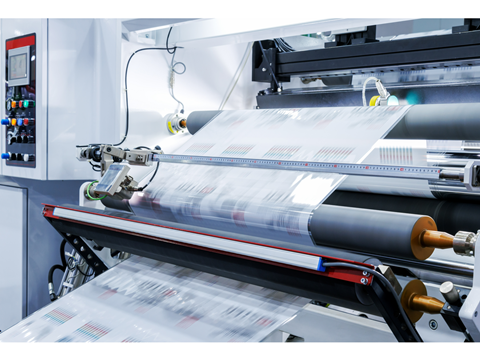
Data and consulting company Smithers’ in-depth market modelling, The Future of Package Printing to 2029, predicts a growth trajectory for the packaging print industry that will push its global value to $604.0 billion in 2029.
The company says that while traditional publication and graphics markets are static or in decline, rising consumption of packaged goods is fuelling growth, giving the example of Drupa 2024 where multiple original equipment manufacturers (OEMs) debuted new machines for printing corrugated board, folding cartons, flexible packaging and labels.
Smithers says its market modelling shows that in 2024 total global value in the sector will reach $504.9 billion (constant 2023 pricing), resulting in 14.31 trillion A4 print equivalents of labels, corrugated board, folding cartons, flexible paper and plastics, rigid plastic and metal packaging printed this year; consuming 1.54 million tonnes of ink.
It adds that a steady growth trajectory is asserting itself, expected to push global value to $604.0 billion in 2029, representative of a +3.6% compound annual growth rate (CAGR), by value. Across the same five years, output is anticipated to increase to 17.12 trillion A4 equivalents.
According to Smithers, flexo remains the most widely used print process, accounting for 52.6% of contemporary output, with gravure and offset litho often used for printing higher-quality graphics on folding cartons and flexible packaging, accounting for 20.1% and 17.9% of packaging and labels volume respectively.

Digital print, especially the latest higher throughput inkjet machines, poses a direct challenge to all analogue OEMs, Smithers believes. It adds that quality is improving on inkjet and electrophotography (toner) presses, even as they become more cost-competitive for longer print runs. These also offer shorter turnaround times, less wastage, give greater scope for customization, and are easier to integrate with online design and ordering systems – calling for greater versatility from packaging buyers.
The company claims there is a developing footprint of single-pass inkjet corrugated presses, and narrow web toner and inkjet machines are increasingly being configured to also take short-run flexible jobs. The potential of these systems to offer added value, means that while digital only accounts for 1.1% of volume in 2024, it represents 3.9% of value. Smithers forecasts further expansion, with digital output growing at a +12.8% CAGR across the next five years.
In response, analogue OEMs are reportedly investing in greater automation combined with online maintenance platforms and developing hybrid systems, with inkjet stations printing variable data elements on high-speed analogue lines. The ‘drive for greater sustainability’ is said to be pushing converters to use more paperboard and coated paper stocks, as well as thicker monomaterial polymer formats in flexibles.
Smithers states that regulatory developments including the EU’s Packaging and Packaging Waste Regulation (PPWR) are emphasizing recyclability, creating demand for packaging printers to ‘switch to water-based inks, invest in better de-inking technology, and work with new material sets that are easier to recover at end of life’. In the narrow web segment, this is apparently pushing converters to move towards thinner easier to separate labelstocks, lowering ink coverage, and minimizing or switching adhesives.
In a report released in April, Smithers predicted that the global value of reusable and refillable packaging would reach $28.20 billion in 2024. Data modelling for new consumer reuse and refill concepts – refill at home, return from home, and refill in store – suggests that sales will increase at a +15.0% CAGR until 2029.
In July, Rabobank’s analysis and knowledge team, RaboResearch, reported that the demand for recycled polymers has grown in the US and UK markets and is expected to continue rising in the coming years, primarily driven by state regulation and company pledges in the US and EU-level regulation. Rabobank stated that in the global post-consumer recycled content (PCR) market, over half of PCR consumption is in Europe, and the food and beverage sector is set to expand its demand for sustainable packaging through 2026.
If you liked this story, you might also enjoy:
The ultimate guide to the Packaging and Packaging Waste Regulation in 2024
How are the top brands progressing on packaging sustainability?
Sustainable Innovation Report 2024: Current trends and future priorities
Everything you need to know about global plastic sustainability regulation












No comments yet